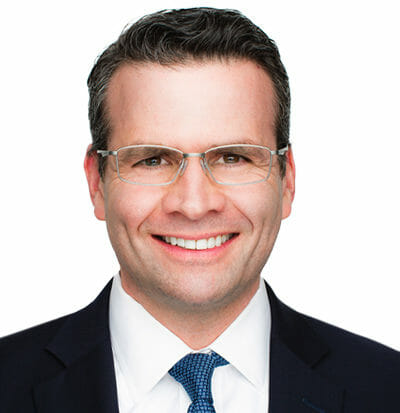Lucky Brand Dungarees, Inc. v. Marcel Fashions Grp., Inc., __ U.S.__, 140 S. Ct. 1589 (2020)
The Supreme Court of the United States—in the context of a two-decade-long trademark dispute between clothing brand Marcel Fashions dba Get Lucky and jean maker Lucky Brand—ruled that the traditional theories of claim preclusion could be extended to bar a defendant from asserting defenses in a later suit that were not raised or fully litigated in an earlier suit. Resolving a split among the Circuit courts, the Supreme Court held that there exists no standalone “defense preclusion doctrine” and that whether defense preclusion applies in a case depends on whether the strict requirements applicable to claim preclusion are met. Justice Sotomayor, delivering the opinion for a unanimous Court, held that the requirements for defense preclusion were not met in this case because the (1) issues raised in the later suit were not the same as the earlier suit, (2) the facts giving rise to the later suit were not at issue in the earlier suit, and (3) the two suits “lacked a common nucleus of operative facts,” which is a prerequisite for claim preclusion.
The decision arises from a protracted litigation between two clothing brands, Marcel Fashions Group, Inc. (“Marcel”) and Lucky Brand Dungarees, Inc. (“Lucky Brand”). In 2001, Marcel brought suit against Lucky Brand for its use of the phrase “Get Lucky” in advertisements, which Marcel claimed infringed upon its federally-registered GET LUCKY mark. In 2003, the parties signed a settlement agreement in which Lucky Brand agreed to stop using the phrase “Get Lucky,” and Marcel provided a release of claims regarding Lucky Brand’s use of its own trademarks, some of which include the term LUCKY.
In 2005, the parties commenced a second round of litigation when Lucky Brand filed suit against Marcel, claiming that Marcel infringed upon Lucky Brands’ trademarks by copying its designs and logos in a new clothing line. Marcel responded with several counterclaims, alleging that Lucky Brand had continued to use the phrase “Get Lucky” in violation of the settlement agreement and that Lucky Brand’s use of the phrase “Get Lucky” together with its LUCKY-inclusive marks was confusingly similar to Marcel’s own GET LUCKY mark. Lucky Brand moved to dismiss the counterclaims, arguing that they were barred by the release in the settlement agreement. Following the district court’s denial of the motion to dismiss, Lucky Brand asserted the release as a defense in its answer to Marcel’s counterclaims but failed to pursue the defense for the remainder of the litigation. The second round of litigation concluded with (1) the district court finding that Lucky Brand violated the settlement agreement by continuing to use the phrase “Get Lucky” and permanently enjoining Lucky Brand from copying or imitating Marcel’s GET LUCKY mark, and (2) a jury finding that Lucky Brand’s use of the phrase “Get Lucky” alongside its own LUCKY-inclusive trademarks infringed upon Marcel’s GET LUCKY mark.
In 2011, the parties battled again. This time, Marcel brought suit against Lucky Brand. Unlike the prior suits, which focused on the use of the phrase “Get Lucky” by Lucky Brand, Marcel this time alleged that Lucky Brand’s standalone use of its LUCKY-inclusive trademarks infringed upon Marcel’s GET LUCKY mark and violated the 2005 injunction. Marcel sought a permanent injunction enjoining Lucky Brand from using any of its trademarks containing the term LUCKY. Lucky Brand moved to dismiss the action, arguing that Marcel had released any claims relating to Lucky Brand’s use of its LUCKY-inclusive trademarks as part of the 2003 settlement agreement. In response, Marcel argued that Lucky Brand was precluded from asserting the release as a defense because Lucky Brand raised and could have pursued the defense more thoroughly in the 2005 action but neglected to do so. The district court granted Lucky Brand’s motion to dismiss, holding that Lucky Brand was not precluded from raising the contractual release defense under a claim preclusion theory. The Second Circuit vacated and remanded the decision, holding that a defendant should be precluded from asserting an un-litigated defense that could have been raised in an earlier, related litigation under a doctrine that it called “defense preclusion.”
Writing for a unanimous Court, Justice Sotomayor set forth at the outset of her legal analysis the requirements for traditional claim preclusion. “[C]laim preclusion prevents parties from raising issues that could have been raised and decided in a prior action—even if they were not actually litigated. If a later suit advances the same claim as an earlier suit between the same parties, the earlier suit’s judgment prevents litigation of all grounds for, or defenses to, recovery that were previously available to the parties, regardless of whether they were asserted or determined in the prior proceeding. Suits involve the same claim (or ‘cause of action’) when they aris[e] from the same transaction, or involve a common nucleus of operative facts.” Lucky Brand Dungarees, Inc. v. Marcel Fashions Grp., Inc., 140 S. Ct. 1589, 1594 (2020) (internal citations omitted). The Court made clear that it has “never explicitly recognized ‘defense preclusion’ as a standalone category of res judicata” and did not do so here. Rather, any preclusion of defenses must “satisfy the strictures of issue preclusion or claim preclusion.” Id. at 1595.
Applying the standard to this case, the Court found that because the 2005 suit between the parties was grounded on different conduct than the 2011 suit (i.e. the 2005 suit concerned Lucky Brand’s pre-2005 use of the phrase “Get Lucky” in connection with its LUCKY BRAND mark whereas the 2011 suit concerned Lucky Brand’s post-2010 use of its LUCKY-inclusive marks standing alone), the two cases “did not share a common nucleus of operative facts.” Id. Importantly, the Court also recognized that because the conduct that formed the basis for the 2011 suit occurred after the complaint was filed in the 2005 suit, the later conduct gave “rise to new material operative facts that in themselves . . . . create a new claim to relief.” Id. The Court concluded that “at bottom . . . the two suits thus lacked a common nucleus of operative facts” and claim preclusion “could not bar Lucky Brand from asserting its settlement agreement defense in the 2011 Action.” Id. at 1596.
The Court’s holding in Lucky Brand v. Marcel reinforces existing jurisprudence regarding issue preclusion and claim preclusion and resolves a Circuit split about the applicability of the so-called “defense preclusion” doctrine by making clear that this doctrine does not stand alone but instead must satisfy the strict requirements of either issue preclusion or claim preclusion. This is not the first time that the Court has cemented the status quo with respect to its jurisprudence surrounding claim preclusion within the context of a trademark case. In B & B Hardware, Inc. v. Hargis Industries, Inc., 575 U.S. 138 (2015), the Court ruled that decisions rendered by the Trademark Trial and Appeal Board may have a preclusive effect on federal court litigations so long as the “ordinary elements” of issue preclusion are met. The decision here is similar as it permits defense preclusion to apply only when the ordinary elements of claim preclusion are met. However, unlike the decision in B & B Hardware which may have limited applicability to trademark claims only, the Court’s decision here is applicable to all types of civil claims.


















































